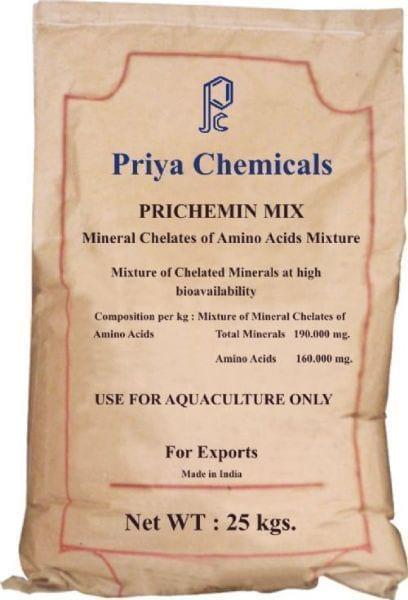Explore all the information on
Aquaculture health
Welcome to the page about Aquaculture health of Engormix; a source of knowledge on Aquaculture health.
INTRODUCTION Dietary mycotoxin contamination is an area of great concern for different organisms ( Abdelhamid, 2019a & b ). It negatively affects the immune system, gut development ( Mass, 2018 ), digestion and performance ( Abdelhamid et al ., 1992 ), and may lead to death ( Abdelhamid et al ., 2006 ); so, leads to economic loss ( Abdelhamid, 2000; 2004 and 2009 )....
Comments : 0
Recommendations: 3
According the Food and Agriculture Organization - FAO report (2018), of the 171 million tonnes of total fish production in 2016, approximately 88 percent (over 151 million tonnes) was used for direct human consumption, a share that has increased significantly in recent decades. Therefore, to meet the growing demand for fish, fish nutrition and health will play an increasingly important role in the global food Industry. Intensive fish and shrimp farms are...
Comments : 1
Recommendations: 3


PRICHEMIN MIX
Priya's PRICHEMIN MIX is a mineral supplement for aquaculture. It consists of a mix of mineral chelats from aminoacids
Suggested link
Commercial breeding of fish as a source of protein generates a significant amount of business around the globe. As many species are highly sensitive to fluctuations in water temperature, pH, and levels of oxygen and nitrogen, the chemical and biological environment of aquaculture systems must be closely monitored and maintained (Mumpton, 1985). The natural absorption and adsorption capabilities of zeolite make it the perfect candidate to promote the ongoing health and sustainability of...
Comments : 0
Recommendations: 0
1. Introduction Aquaculture contributes about 74% of the total fish production in Egypt [1]. Egypt is an arid country that has a negative water balance. Its annual water supply from the Nile, rainfall along the Mediterranean coast and deep groundwater amount to approximately 57.7 billion cubic meters (BCM). But each year, the farms, industries, and people use around 72.4 BCM [2]. The reuse of drainage water is one of the main reasons why Egyptians can use a larger amount of...
Comments : 0
Recommendations: 0


PRICHEMIN MIX
Priya's PRICHEMIN MIX is a mineral supplement for aquaculture. It consists of a mix of mineral chelats from aminoacids
Suggested link
The Vibrio bacteria in shrimp: how a common pathogen in shrimp farming became the leading character in the EMS story. During the past year, evidence has accumulated on how the ongoing outbreak of early mortality syndrome (EMS) or more precisely acute hepatopancreatic necrosis disease (AHPND) is caused by a specific strain of the Vibrio parahaemolyticus bacteria. That this newly emerged disease is caused by a well-studied...
Comments : 2
Recommendations: 6
Philippe TACON, Regional Sales & Technical Manager, South-East Asia for Phileo Lesaffre, speaks about the problems and challenges that companies face in that region, and how Phileo can help the producers to solve some problem with innovative products in aquaculture....
Comments : 3
Recommendations: 5


PRICHEMIN MIX
Priya's PRICHEMIN MIX is a mineral supplement for aquaculture. It consists of a mix of mineral chelats from aminoacids
Suggested link
Karl Andree, IRTA researcher, for the ITACA project demostrates a necropsy on a tilapia for health examination...
Comments : 3
Recommendations: 0
First published at the 18th ISFNF conference (International Symposium on Fish Nutrition and Feeding), in Las Palmas de Gran Canaria, Spain, from 3rd to 7th June...
Comments : 9
Recommendations: 4


PRICHEMIN MIX
Priya's PRICHEMIN MIX is a mineral supplement for aquaculture. It consists of a mix of mineral chelats from aminoacids
Suggested link
...
Comments : 7
Recommendations: 2
For a long time, the most common method for dealing with the occurrence of bacterial infections in aquaculture was the administration of antibiotics. However, aquaculture faces serious problems due to various adverse effects of these drugs such as accumulation in the tissue and environmental microbial flora. Moreover, to use antibiotic or vaccine for fish is expensive and in many farms its use is unavailable (Yousefian and Amiri, 2009). Thus, the use of substances or additives incorporated...
Comments : 2
Recommendations: 3


PRICHEMIN MIX
Priya's PRICHEMIN MIX is a mineral supplement for aquaculture. It consists of a mix of mineral chelats from aminoacids
Suggested link
Introduction Ozone (O 3 ) is a three-atom allotrope of oxygen held together by unstable bonds. A single oxygen atom breaks away easily and reacts with most of the organic and inorganic molecules that it contacts (Lawson 1995). This makes ozone a powerful oxidizing agent, reacting directly and indirectly with other compounds. Indirect reactions occur when ozone decomposes into radicals and these react with other...
Comments : 1
Recommendations: 0
1. Introduction Grouper is an economically important fish species for aquaculture in Southeast Asian countries. Due to the intensive culture, groupers have been suffering from not only viral but also bacterial diseases, such as vibriosis, resulting in serious economic loss. Vibriosis is also known as fatal hemorrhagic septicemia, and the causative agents of vibriosis belong to the genus Vibrio, such as Vibrio alginolyticus, Vibrio harveyi, and Vibrio anguillarum. The...
Comments : 1
Recommendations: 1


PRICHEMIN MIX
Priya's PRICHEMIN MIX is a mineral supplement for aquaculture. It consists of a mix of mineral chelats from aminoacids
Suggested link
Brown blood disease occurs in fish when water contains high nitrite concentrations. Nitrite enters a fish culture system after feed is digested by fish and the excess nitrogen is converted into ammonia, which is then excreted as waste into the water. Total ammonia nitrogen (TAN; NH3 and NH4+) is then converted to nitrite (NO2) that, under normal conditions, is quickly converted to nontoxic nitrate (NO3) by naturally occurring bacteria. Uneaten (wasted) feed and other organic...
Comments : 1
Recommendations: 0
For a long time, the most common method for dealing with the occurrence of bacterial infections in aquaculture was the administration of antibiotics. However, aquaculture faces serious problems due to various adverse effects of these drugs such as accumulation in the tissue and resistance in environmental microbial flora. On the other hand, to use antibiotic or vaccine for fish is expensive and in many farms unavailable (Yousefian and Amiri, 2009), however, the use of substances or nutrients...
Comments : 0
Recommendations: 2


PRICHEMIN MIX
Priya's PRICHEMIN MIX is a mineral supplement for aquaculture. It consists of a mix of mineral chelats from aminoacids
Suggested link
Phytoplankton are the key food item in both aquaculture and mariculture. Both systems are utilizing phytoplankton as food for the animals being farmed. In aquaculture, phytoplankton must be obtained and developed artificially through various adapted procedures. The plankton population in form of desirable bloom undertaken throughout the culture period as part of best pond management practice. Phytoplankton is used as a food stock for the production of zooplankton...
Comments : 15
Recommendations: 2
Introduction Aquaculture is the fastest growing sector of food production, comprising almost 50 % of fish aimed at human consumption worldwide. It is estimated that aquaculture production should be two and a half order of magnitude by 2030 to keep up current levels of per capita consumption. Aquatic animals such as finfish, crustaceans and molluscs are particularly susceptible to a broad range of...
Comments : 4
Recommendations: 2


PRICHEMIN MIX
Priya's PRICHEMIN MIX is a mineral supplement for aquaculture. It consists of a mix of mineral chelats from aminoacids
Suggested link
Cristina García Diez, Specialist for Aquaculture from Liptosa, talks about the company's products they offer to the Aquaculture market at VIV Asia 2017, in Thailand.
*Certain information associated with products, their composition and claims may be different depending on the geographical region and may not be applicable in all countries. Liptosa reserves the right to adapt to the requirements and legislation in each case.
The information and technical recommendations provided herein are...
Comments : 3
Recommendations: 8
Introduction Cyanobacteria, blue-green algae, harmful algae, and toxic algae are words that can confuse people who are trying to decide on pond water safety. Certain algae can cause serious problems when they become very abundant in drought, hot weather, unusual rainfall patterns, or after nutrient accumulation in pond water. Fortunately, most ponds do not experience toxin problems or dense algal blooms. Watching for the warning signs that lead to toxic algal bloom development...
Comments : 1
Recommendations: 3


PRICHEMIN MIX
Priya's PRICHEMIN MIX is a mineral supplement for aquaculture. It consists of a mix of mineral chelats from aminoacids
Suggested link
A phytobiotic was able to reduce Vibrio counts in intestine and hepatopancreas leading to an increase in survival and better health. Shrimp farming is growing very fast in recent years, due to the high profit margins which present a good opportunity for those with interest in this sector. In Asia the production of Pacific white shrimp (Litopenaeus vannamei) was more than 3 million tonnes in...
Comments : 17
Recommendations: 18
Shrimp farming currently yields about 800,000 mT of shrimp a year. The industry has grown phenomenally in the past 25 years considering that farmed shrimp production in the early 1970s was less than 10,000 mT. The industry grew exponentially in the 1980s. Its further growth was arrested in the 1990s when a number of disease problems surfaced. While bacterial and viral diseases have been common in the industry since its inception, the scale of destruction caused by three specific viral disease...
Comments : 3
Recommendations: 0















